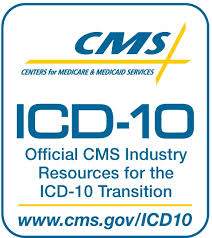The following is email communication from CMS.
 Last week, the Centers for Medicare & Medicaid Services (CMS) shared five facts dispelling misperceptions about the transition to ICD-10. Here are five more facts addressing common questions and concerns CMS has heard about ICD-10:
Last week, the Centers for Medicare & Medicaid Services (CMS) shared five facts dispelling misperceptions about the transition to ICD-10. Here are five more facts addressing common questions and concerns CMS has heard about ICD-10:
1. If you cannot submit ICD-10 claims electronically, Medicare offers several options.
CMS encourages you to prepare for the transition and be ready to submit ICD-10 claims electronically for all services provided on or after October 1, 2015. But if you are not ready, Medicare has several options for providers who are unable to submit claims with ICD-10 diagnosis codes due to problems with the provider’s system. Each of these requires that the provider be able to code in ICD-10:
- Free billing software that can be downloaded at any time from every Medicare Administrative Contractor (MAC)
- In about ½ of the MAC jurisdictions, Part B claims submission functionality on the MAC’s provider internet portal
- Submitting paper claims, if the Administrative Simplification Compliance Act waiver provisions are met
If you take this route, be sure to allot time for you or your staff to prepare and complete training on free billing software or portals before the compliance date.
2. Practices that do not prepare for ICD-10 will not be able to submit claims for services performed on or after October 1, 2015.
Unless your practice is able to submit ICD-10 claims, whether using the alternate methods described above or electronically, your claims will not be accepted. Only claims coded with ICD-10 can be accepted for services provided on or after October 1, 2015.
3. Reimbursement for outpatient and physician office procedures will not be determined by ICD-10 codes.
Outpatient and physician office claims are not paid based on ICD-10 diagnosis codes but on CPT and HCPCS procedure codes, which are not changing. However, ICD-10-PCS codes will be used for hospital inpatient procedures, just as ICD-9 codes are used for such procedures today. Also, ICD diagnosis codes are sometimes used to determine medical necessity, regardless of care setting.
4. Costs could be substantially lower than projected earlier.
Recent studies by 3M and the Professional Association of Health Care Office Management have found many EHR vendors are including ICD-10 in their systems or upgrades—at little or no cost to their customers. As a result, software and systems costs for ICD-10 could be minimal for many providers.
5. It’s time to transition to ICD-10.
ICD-10 is foundational to modernizing health care and improving quality. ICD-10 serves as a building block that allows for greater specificity and standardized data that can:
- Improve coordination of a patient’s care across providers over time
- Advance public health research, public health surveillance, and emergency response through detection of disease outbreaks and adverse drug events
- Support innovative payment models that drive quality of care
- Enhance fraud detection efforts
Keep Up to Date on ICD-10
Visit the CMS ICD-10 website for the latest news and resources to help you prepare. Sign up for CMS ICD-10 Industry Email Updates and follow us on Twitter.
